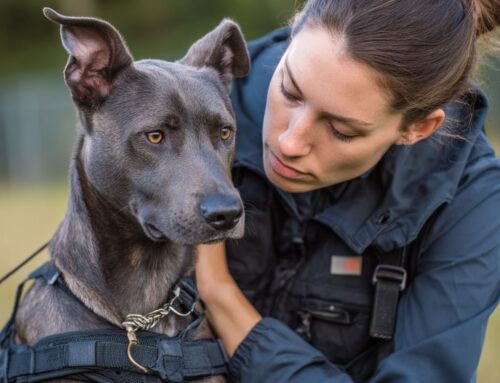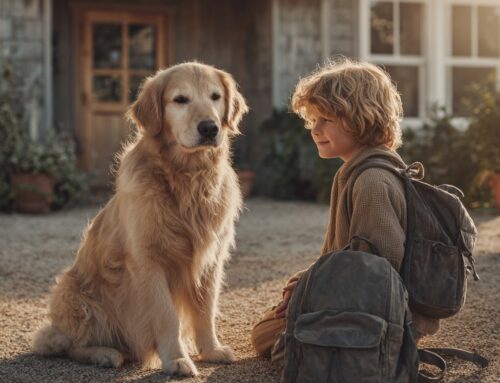When you go on the thrilling adventure of welcoming a new puppy into your home it is an experience filled with joy and anticipation. The boundless energy, infectious enthusiasm, and unwavering loyalty of a puppy can quickly become the heartwarming center of your household. However, woven into the fabric of this delightful journey is the crucial responsibility of proper basic puppy training.
As a puppy parent, you’re undoubtedly bombarded with well-intentioned advice from various sources, ranging from friends and family to the vast realm of online resources of dog training. Yet, within this sea of guidance, myths about puppy training persist, potentially clouding the path to successful and harmonious companionship. We aim to illuminate the truths, debunk common misconceptions, and equip you with practical tips that will not only demystify the process of puppy training and dog behavior but also lay the foundation for a strong and mutually fulfilling relationship with your newest family member.
Myth 1: “One Size Fits All” Training Approaches
A prevalent misconception in the realm of basic training is the belief that a singular training method works universally for all dogs. This “one size fits all” approach oversimplifies the diverse personalities, temperaments, and learning styles present in our furry companions. Every puppy is unique, and what may be effective for one might not resonate with another. Embracing a tailored training strategy is vital for fostering a positive and responsive learning experience.
Tip: Tailor Your Approach to Your Puppy’s Individuality
Understanding your puppy’s specific characteristics is the cornerstone of successful training because just like humans each puppy has their own personality. Observe their reactions, preferences, and energy levels to tailor your approach accordingly for the appropriate behavior. Some puppies may thrive on high-energy, interactive training sessions, while others may require a more calm and patient demeanor and lots of puppy treats. Experiment with different training techniques and be adaptable in your methods to teach your puppy. The key is to establish a harmonious connection built on trust and understanding, acknowledging that what works for one puppy might not be the perfect fit for another. By recognizing and embracing your puppy’s individuality, you’ll pave the way for a more effective and enjoyable training journey.
Myth 2: “Puppies Will Outgrow Undesirable Behaviors”
One prevalent myth suggests that an unwanted behavior exhibited by puppies will naturally diminish as they grow older. However, ignoring these behaviors can lead to ingrained habits that are more challenging to correct later on. It’s essential to address and redirect undesirable behaviors from the start, promoting positive habits as your puppy matures.
Tip: Address and Redirect
To effectively manage undesirable behaviors in your puppy, it’s crucial to promptly address and redirect their actions. First, keenly identify and acknowledge any unwanted behaviors as they arise. By doing so, you establish clear communication with your puppy, signaling that certain actions are not acceptable. However, merely acknowledging the behavior is not sufficient; the next step involves redirection. Rather than ignoring the behavior, redirect your puppy’s focus toward more appropriate activities or commands. This proactive approach not only discourages undesirable behaviors but also provides your puppy with positive alternatives, fostering a constructive learning experience. And to make it easier on your dog’s life, you can enroll them early on to puppy training programs to help get those behaviors corrected early.

Myth 3: “Training Is Only for Obedience”
Training is not solely about obedience; it’s a multifaceted approach that strengthens the bond between you and your puppy. Beyond basic commands in basic obedience training, training enriches your puppy’s mental and physical well-being.
Tip: Enrichment Training
Enhance your puppy’s overall well-being with enrichment training. Engage your puppy mentally by introducing various forms of mental stimulation, such as puzzle toys, interactive games, and advanced commands. This not only keeps their minds active but also deepens the bond between you and your furry friend through shared activities. In addition to mental exercises, ensure your puppy stays physically stimulated by incorporating activities like agility training or fetching. These physical endeavors not only contribute to their physical health but also provide an outlet for their energy, creating a well-rounded and contented canine companion. And after your puppies reach a certain age you can enroll them into doggy daycares to gain some social canine interaction for extra enrichment training.
Myth 4: “Puppies Should Wait Until a Certain Age to Learn Tricks”
Delaying trick training until a specific age is unnecessary. Puppies are capable of learning tricks at a young age, and incorporating fun tricks into training sessions can be both entertaining and mentally stimulating.
Tip: Introduce Simple Tricks Early On
Start the process early, teaching endearing tricks such as “shake,” “roll over,” or “spin” to captivate your puppy’s interest and stimulate their cognitive abilities. The key to successful trick training lies in employing positive reinforcement consistently. By using treats, praise, or affection to reward your puppy’s efforts, you not only make the learning experience enjoyable for them but also strengthen the bond between you and your furry companion. This positive approach not only nurtures a well-behaved puppy but also creates a foundation for a harmonious and joyful relationship.
Myth 5: “Punishment Is Necessary for Bad Behavior”
The idea that punishment is the only way to correct bad behavior is outdated and can be counterproductive. Positive reinforcement is a more effective and humane approach that builds trust between you and your puppy. Puppies may not understand the punishment of an accident like an indoor accident, potentially leading to confusion.
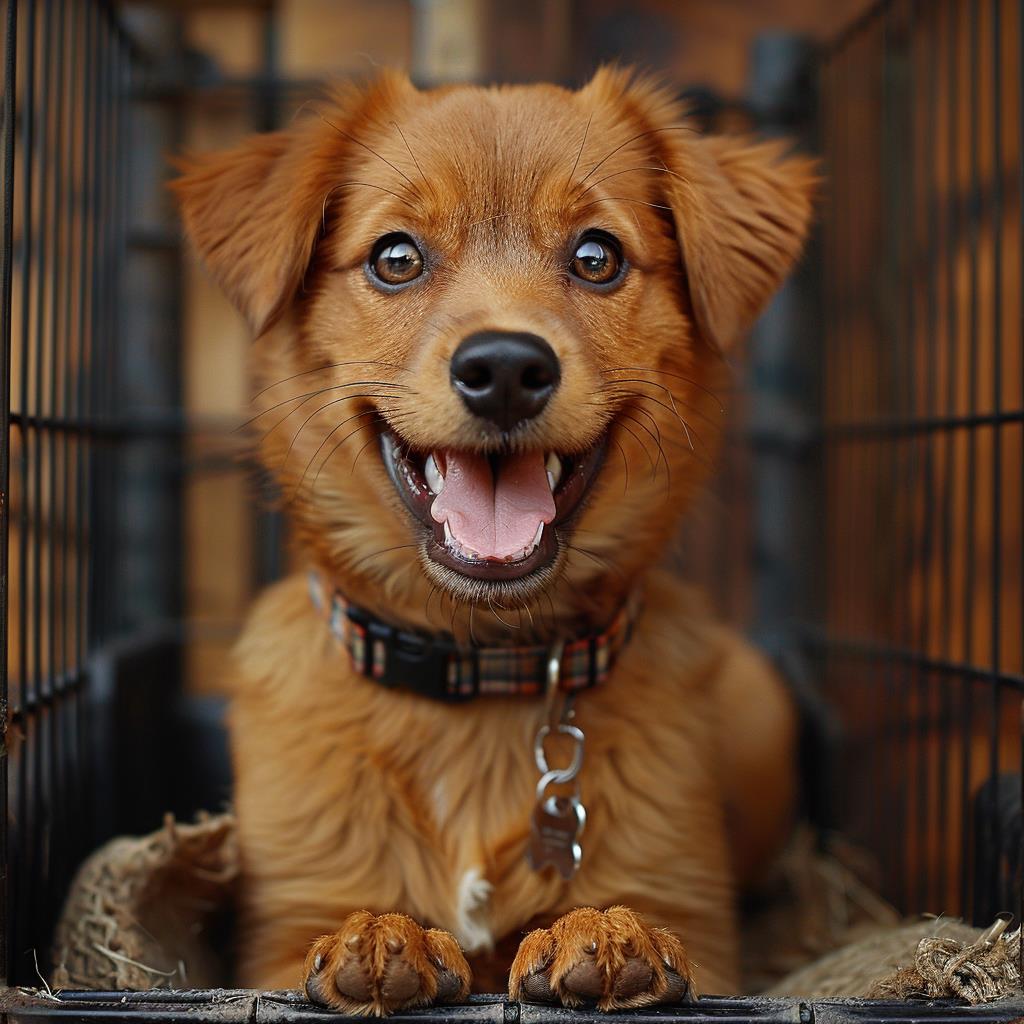
Tip: Focus on Positive Reinforcement
Adopting a positive reinforcement approach is paramount in nurturing a well-behaved and trusting relationship with your puppy. Instead of resorting to punishment, focus on redirecting your puppy’s attention towards positive behaviors. By actively guiding them toward more appropriate actions, you create an environment that encourages learning without instilling fear, but make sure to still be stern. Furthermore, consistently reinforce good behavior through a combination of treats, verbal praise, and affection. For instance, praise and reward your puppy when they successfully eliminate outside, reinforcing the desired behavior and establishing a positive association with proper bathroom habits. This constructive method not only fosters a happier and more responsive pet but also solidifies the foundation for a strong human-canine connection based on trust and encouragement.
Myth 6: “Puppies Should Be Weaned Off Treats Quickly”
Some believe that treats should be phased out early in training to avoid dependency. However, treats are a valuable tool for reinforcing positive behaviors, and a gradual reduction is more effective than an abrupt withdrawal.
Tip: Gradual Reduction of Treats
Initiate a weaning process by systematically decreasing the frequency of treats as your puppy demonstrates increased consistency in obeying commands. This gradual transition helps your puppy develop a sustainable reliance on positive reinforcement beyond just treats. Embrace a diverse range of rewards, including praise, playtime with toys, or other forms of positive reinforcement, alongside the use of treats. This variation not only maintains your puppy’s motivation but also ensures that they respond positively to a range of reinforcing stimuli, contributing to a well-rounded and adaptable training experience.
Myth 7: “All Dogs Love Hugs and Kisses”
Assuming that all dogs enjoy hugs and kisses can lead to discomfort and stress for some dogs. Not all dogs appreciate close physical contact, and it’s important to respect their individual preferences.
Tip: Respect Personal Space
Cultivating a harmonious relationship with your dog involves recognizing the importance of respecting their personal space. By keenly observing your dog’s body language, you can discern signs of discomfort and establish clear boundaries. There is a big significance in paying attention to cues that your dog may exhibit, ensuring a comfortable and stress-free environment. Moreover, when expressing affection, consider alternative methods that align with your dog’s preferences. Opt for gentle petting or engaging in playful activities together, fostering a connection built on mutual understanding and trust. This approach not only enhances the bond between you and your canine companion but also contributes to a positive and enjoyable companionship.
Myth 8: “Training Should Only Happen at Home”
Limiting training to your home can result in a puppy that struggles to behave in different environments. It’s essential to expose your puppy to various settings to generalize their training.

Tip: Train in Different Environments
Enhance the versatility of your puppy’s training by practicing in diverse environments. Engage in training sessions in varied locations, exposing your puppy to different settings to cultivate adaptability. This approach not only refines their ability to respond to commands in various situations but also strengthens their overall obedience skills. You can even enroll them into puppy training programs to help diversify their puppy training. Additionally, employ distraction training by gradually introducing external stimuli during sessions. This method assists in honing your puppy’s focus and concentration, preparing them to respond effectively even in environments with potential distractions. By embracing this comprehensive training strategy, you contribute to the development of a well-rounded and adaptable canine companion.
Myth 9: “Using a Crate Is Cruel”
Crate training, when done correctly, is a valuable tool. A common misconception in the realm of puppy training is the belief that utilizing a crate is inherently cruel. This myth often stems from a misunderstanding of the purpose and potential benefits of crate training. When implemented correctly, a crate serves as a valuable tool for creating a safe and secure space for your puppy, aiding in their training, and ensuring their well-being. The misconception that crating is synonymous with cruelty overlooks the positive aspects, such as providing a den-like environment that satisfies a dog’s natural instincts for safety and comfort.
Tip: Positive Crate Association
Incorporate a positive crate train into your puppy training routine by establishing a positive association with the crate. Introduce the crate gradually, ensuring that your puppy associates it with positive experiences. Begin with short periods of crate time initially and gradually extend the duration as your puppy becomes more comfortable. This approach not only helps alleviate any potential anxiety associated with the crate but also fosters a positive mindset, making the crate a secure and welcoming space for your puppy. Or to help alleviate your puppy training you can seek guidance with Performance K9 Training and Boarding which has a Yappy Puppy Program that incorporates crate training within the program.
Myth 10: “Dogs Should Figure It Out on Their Own”
Leaving a puppy to “figure it out” without guidance can lead to confusion and frustration. Clear communication and positive reinforcement are essential for effective training.
Tip: Clear Communication
Establishing clear communication is pivotal in fostering a successful training experience for your puppy. Employ consistent commands when conveying your expectations for desired behaviors, providing a reliable framework for your puppy to understand and follow. Reinforce this communication with positive reinforcement, incorporating rewards and praise when your puppy responds correctly. By associating the desired behavior with positive outcomes, you not only motivate your puppy but also strengthen the communication bond between you and your furry friend, creating a positive and effective learning environment.
Myth 11: “Dogs Should Be Dominated to Ensure Obedience”
This myth suggests that establishing dominance through forceful methods is necessary for training. However, dominance-based techniques can lead to fear and aggression, undermining the trust between you and your puppy.
Tip: Positive Reinforcement Builds Trust
Embracing positive reinforcement is a cornerstone in building a trusting relationship with your puppy. Utilize treats, praise, and positive reinforcement as tools to encourage and reinforce desired behaviors. This approach not only motivates your puppy but also establishes a foundation of trust and understanding. It’s crucial to avoid forceful methods, as building trust through positive interactions proves to be more effective than resorting to dominance-based techniques. By focusing on positive reinforcement, you create an environment where your puppy feels secure, supported, and eager to engage in the learning process, fostering a strong bond based on encouragement and mutual respect.
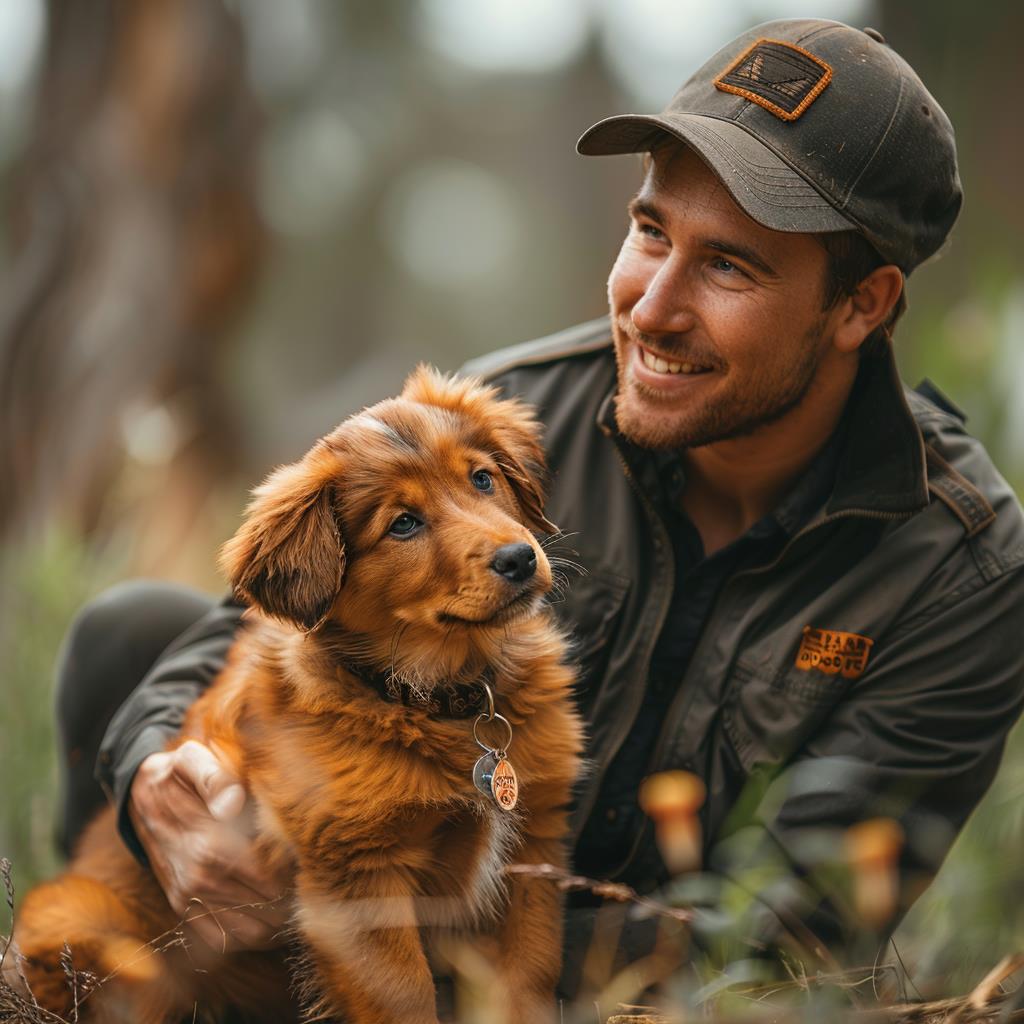
Myth 12: “All Dogs Love All Treats Equally”
Assuming that all dogs have the same treat preferences can hinder effective training. Every dog has its own taste preferences, and identifying high-value treats is crucial for successful positive reinforcement.
Tip: Discover High-Value Treats
Uncover the key to effective positive reinforcement by exploring the world of high-value treats for your puppy. Experiment with an array of treats to discern what truly motivates and captures your puppy’s interest. Additionally, consider reserving special treats for particularly challenging or novel training tasks. By associating these special treats with more demanding exercises, you enhance their appeal and effectiveness in reinforcing positive behavior. This strategic use of high-value treats not only keeps your puppy engaged and enthusiastic during training sessions but also establishes a rewarding system that heightens the overall training experience.
Myth 13: “Once Trained, Always Trained”
The misconception that once a puppy is trained, the learning process is complete can lead to regression in behaviors. Dogs need ongoing reinforcement and practice to maintain good habits.
Tip: Consistent Reinforcement
Maintaining consistency in reinforcing basic commands is a fundamental aspect of successful puppy training. This tip underscores the importance of regularly revisiting fundamental commands to solidify your puppy’s understanding and response. By consistently reinforcing these basics, you establish a reliable foundation for more advanced training. To keep your puppy mentally engaged and continuously progressing, integrate new challenges into their training regimen. This dynamic approach not only prevents monotony but also encourages ongoing mental stimulation, fostering a sharp and adaptable canine learner. Through the combination of consistent reinforcement and the introduction of fresh challenges, you create a well-rounded training experience that promotes continuous growth and positive development in your puppy.
Myth 14: “Puppies Will Automatically Know Where to Go to the Bathroom”
Expecting puppies to instinctively know where to go to the bathroom is a prevalent myth. House potty training requires consistent effort and positive reinforcement.
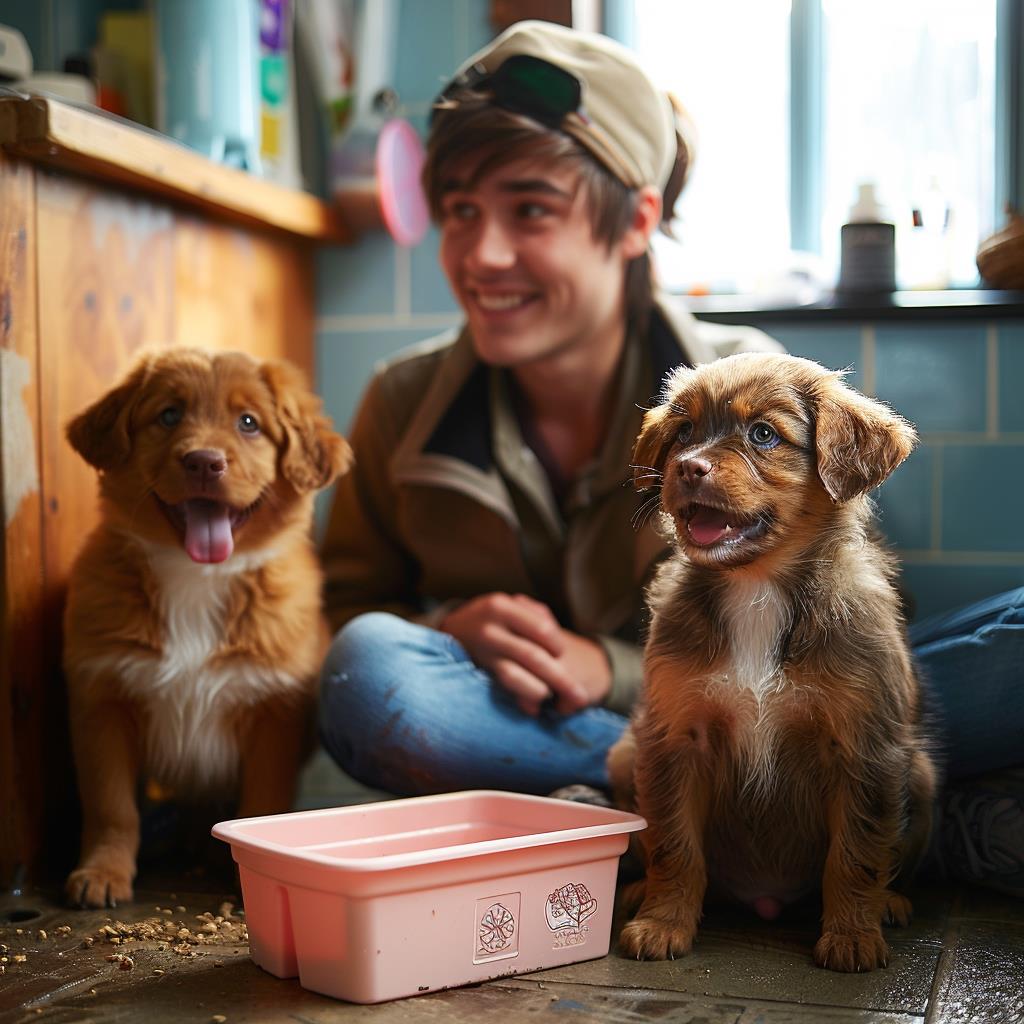
Tip: Consistent House Training
Create a successful foundation for house training your puppy by prioritizing consistency. Begin by establishing a regular routine for bathroom breaks, focusing on key times such as after meals, drinking, and waking up. This structured approach helps your puppy develop a reliable schedule, reducing the likelihood of indoor accidents. Reinforce positive behavior by praising and rewarding your puppy for outdoor elimination. By celebrating their success in the designated outdoor space, you reinforce the desired behavior. Importantly, if accidents occur indoors, redirect your puppy without resorting to punishment. This tip encourages a positive and patient approach to house training, emphasizing the importance of consistency and positive reinforcement for a successful and stress-free learning experience.
Myth 15: “All Aggressive Dogs are Unfixable”
A prevalent myth surrounding canine behavior is the misconception that all aggressive dogs are inherently unfixable. This belief often leads to despair among pet owners and, unfortunately, contributes to the stigmatization of certain breeds or individuals displaying aggressive tendencies. The truth, however, is that aggression in dogs is a complex issue with various underlying causes, including fear, anxiety, territorial instincts, or past traumas. Labeling all aggressive dogs as beyond rehabilitation oversimplifies the matter and disregards the potential for positive change through proper training, behavior modification, and understanding.
Tip: Individualized Training and Professional Guidance
Addressing aggression in dogs requires a tailored and individualized approach. Seek the expertise of a professional dog trainer or behaviorist who can assess your dog’s specific triggers and design a customized training plan. Utilize positive reinforcement techniques to encourage desirable behavior while addressing the root causes of aggression. Patience, consistency, and positive reinforcement can play crucial roles in helping even aggressive dogs transition towards more balanced and secure behavior. Remember, each dog is unique, and with the right guidance and commitment, many aggressive behaviors can be effectively managed and mitigated.
Debunking Puppy Training Tips Myths
By dispelling these myths and embracing positive training techniques, you can build a strong and trusting relationship with your puppy. Remember, training is a journey that requires patience, consistency, and a deep understanding of your puppy’s individual needs. Understanding the nuances of puppy training and dispelling common myths can significantly enhance your training experience. By embracing positive reinforcement, being mindful of individual needs, and exposing your puppy to diverse environments, you’ll foster a well-behaved and confident companion. The journey of puppy training is an ongoing process that, when approached with patience and knowledge, strengthens the bond between you and your furry friend.
And if you’re looking for some extra guidance in your puppy training, look no further than Performance K9 Training and Boarding. They have a wonderful puppy training program called Yappy Puppy Program to help you and your family when you want to start boarding and training your puppy. Contact us to get a free puppy training consultation today and see if we’ll be the right fit for you and your pup!





